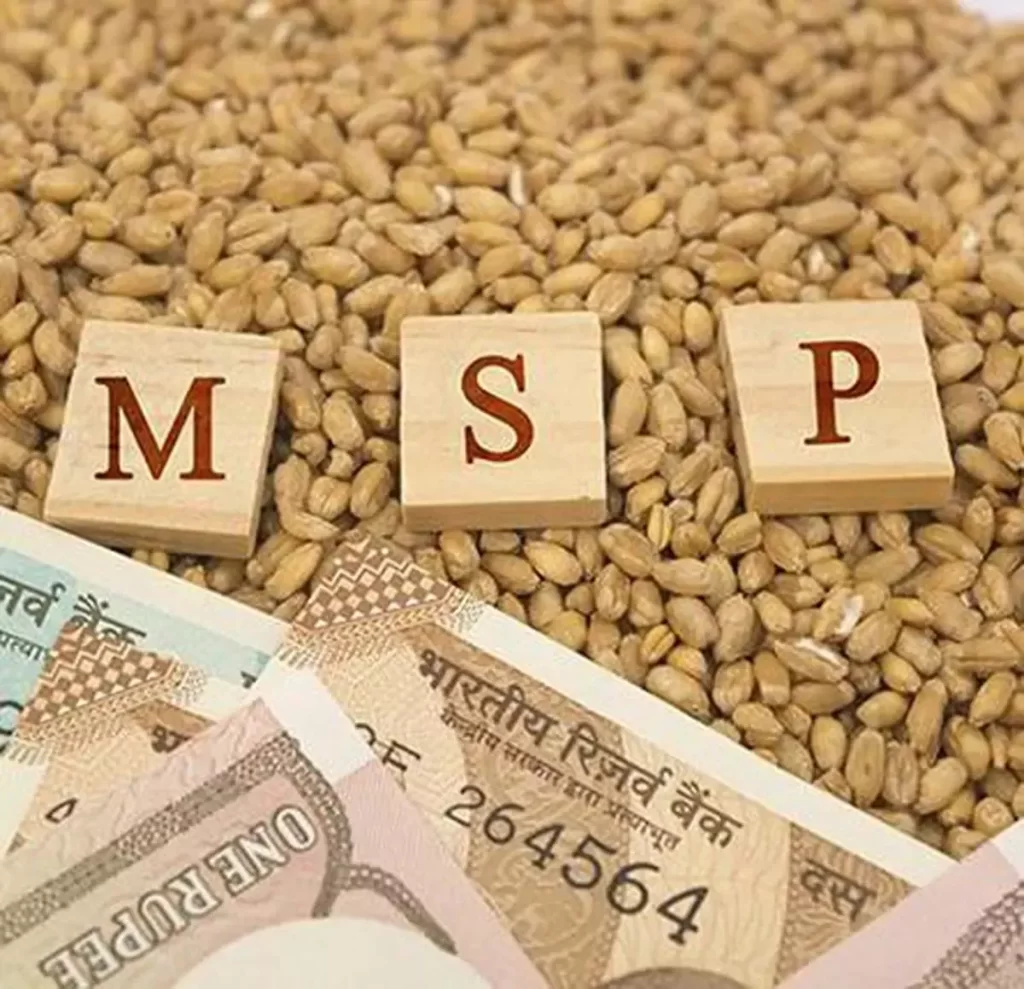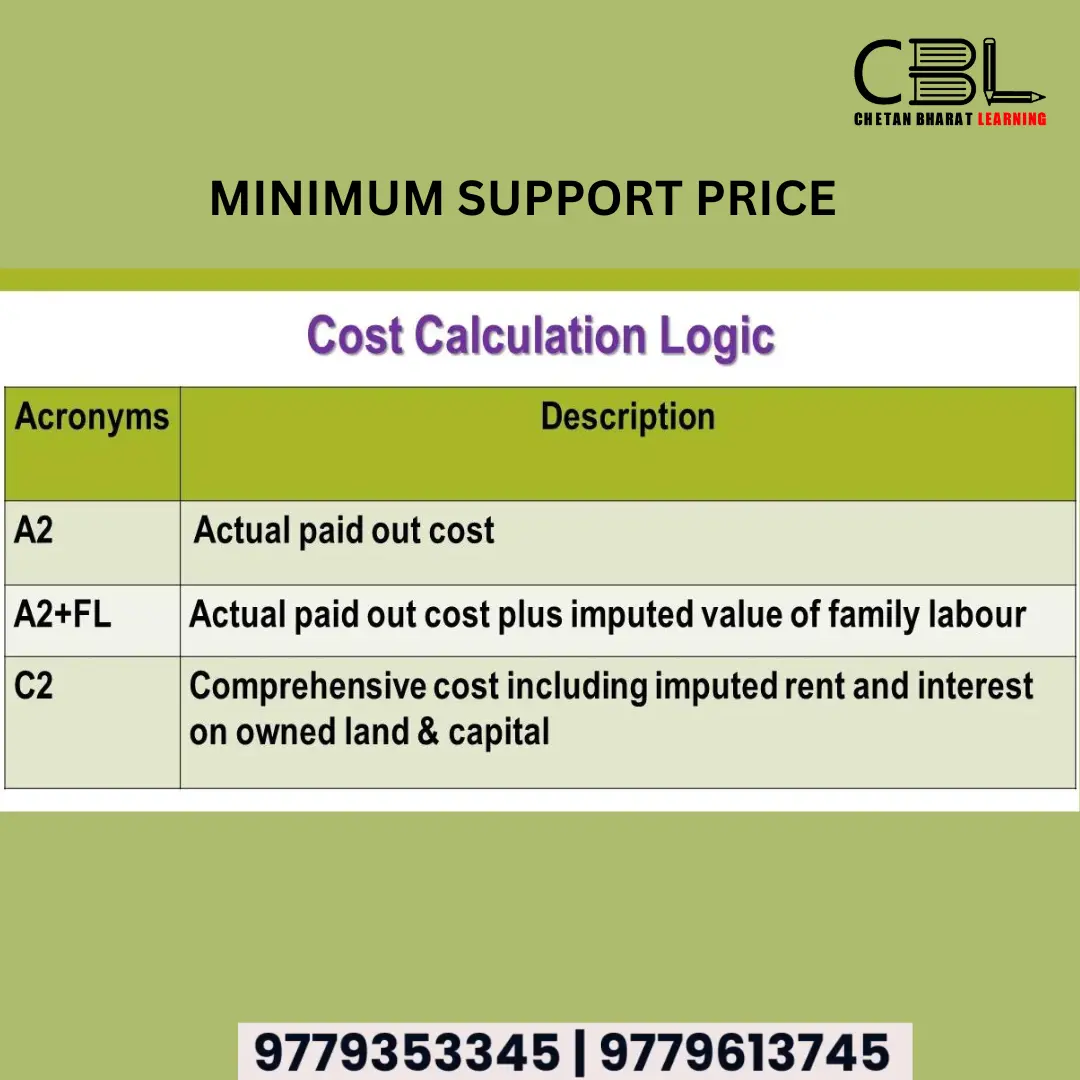Ref: https://www.thehindu.com/news/national/watch-what-is-minimum-support-price/article67894764.ece
Introduction:
Recently, farmer groups have requested a legal assurance for the procurement of crops at Minimum Support Price (MSP).
Minimum support price (MSP) was introduced in 1966-67 as part of agricultural reforms by the Central Government.
- MSP is a “minimum price” for any crop that the Government considers as remunerative for farmers and hence deserving of “support”.
- It is the minimum price set by the government for certain crops deemed remunerative for farmers.
- Government agencies procure crops from farmers at this price.
- MSP acts as a safeguard for farmers against market uncertainties and natural risks.
- Currently, there’s no legal mandate enforcing these prices.
- The Central Government sets MSP for 23 crops, categorised as:
- 7 cereals: bajra, wheat, maize, paddy barley, ragi, and jowar
- 5 pulses: tur, chana, masur, urad, and moong
- 7 oilseeds: safflower, mustard, niger seed, soyabean, groundnut, sesame, and sunflower
- 4 commercial crops: raw jute, cotton, copra, and sugarcane.

Need for MSP
- The necessity for Minimum Support Prices (MSPs) arose due to the adverse impacts of various economic and environmental factors on farmers.
- The consecutive droughts in 2014 and 2015 led to a decline in commodity prices, exacerbating farmers’ hardships.
- Events like demonetization and the implementation of GST further worsened the situation, particularly affecting the rural economy and non-farm sectors alongside agriculture.
- Economic slowdown post-2016-17, coupled with the pandemic, continued to pose challenges for farmers, making their situation increasingly precarious.
- Rising input costs for essentials like diesel, electricity, and fertilizers added to the farmers’ difficulties, highlighting the need for MSPs to provide stability and support in such turbulent times.
How Does the Government Decide on the MSP?
- The government determines MSP at the beginning of each cropping season (Rabi and Kharif).
- The decision relies on thorough analysis of recommendations from the Commission for Agricultural Costs and Prices (CACP). It is an affiliated body of the Ministry of Agriculture and Farmers Welfare.
- CACP’s recommendations are derived from a predetermined formula, considering factors such as actual production costs, family labour contributions, and expenses like fixed assets or rent paid by farmers.
Three Kinds of Production Cost:
- The CACP outlines three types of production costs for each crop, at both state and national levels.
- “A2” encompasses all paid-out expenses directly borne by the farmer, such as seeds, fertilisers, pesticides, hired labor, leased land, fuel, and irrigation.
- “A2+FL” includes A2 costs plus an estimated value of unpaid family labor.
- “C2” represents a more comprehensive cost, incorporating rentals and forgone interest on owned land and fixed capital assets, in addition to A2+FL.
- While recommending Minimum Support Prices (MSPs), the CACP considers both A2+FL and C2 costs, but it only factors in A2+FL costs for determining returns.
- However, C2 costs serve as benchmark reference costs (opportunity costs) for the CACP to ensure that the recommended MSPs adequately cover expenses, especially in major producing states.
- The final decision on MSP levels and other recommendations lies with the Cabinet Committee on Economic Affairs (CCEA) of the Union government.
Legal Guarantee for Minimum Support Price
- The government can establish a legal guarantee for MSP through two main methods, each with significant economic consequences.
- Firstly, it can designate MSP as the minimum price standard for all 23 crops in the market. Thus compelling private entities to adhere to these rates. This could potentially result in price escalation.
- Secondly, the Government itself can buy all 23 crops at MSP.
What are the Issues Associated with India’s MSP Regime?
- Limited Coverage: Despite MSP announcements for 23 crops, only rice and wheat are effectively procured due to their distribution under the NFSA, rendering MSP implementation ad-hoc for other crops.
- Ineffective Implementation: The Shanta Kumar Committee’s 2015 report revealed that merely 6% of farmers could benefit from MSP, leaving 94% deprived of its advantages.
- Procurement Focus: The current MSP system primarily serves as a procurement price to meet NFSA requirements rather than reflecting domestic market prices.
- Dominance of Wheat and Paddy: The skewed MSP system heavily favours rice and wheat. This causes overproduction and discouragement of diversification into crops with higher demand, potentially elevating farmers’ incomes.
- Dependency on Middlemen: The MSP-based procurement relies heavily on middlemen, commission agents, and APMC officials. This poses accessibility challenges for smaller farmers.
Suggestions
- Instead of relying solely on MSP, implementing direct income support seems beneficial. This would benefit the poor irrespective of their occupation, rather than fixing market prices.
- Infrastructure investment is proposed, including improved irrigation, easier credit access, reliable power supply, increased warehouse capacity, and enhanced post-harvest marketing services. This would reduce the vulnerability of Indian farmers.
- Addressing disguised unemployment in the agricultural sector is important. Government should focus boosting India’s industrial and services sectors. These can provide better job opportunities and alleviate economic distress among farmers.


Leave a Reply
You must be logged in to post a comment.